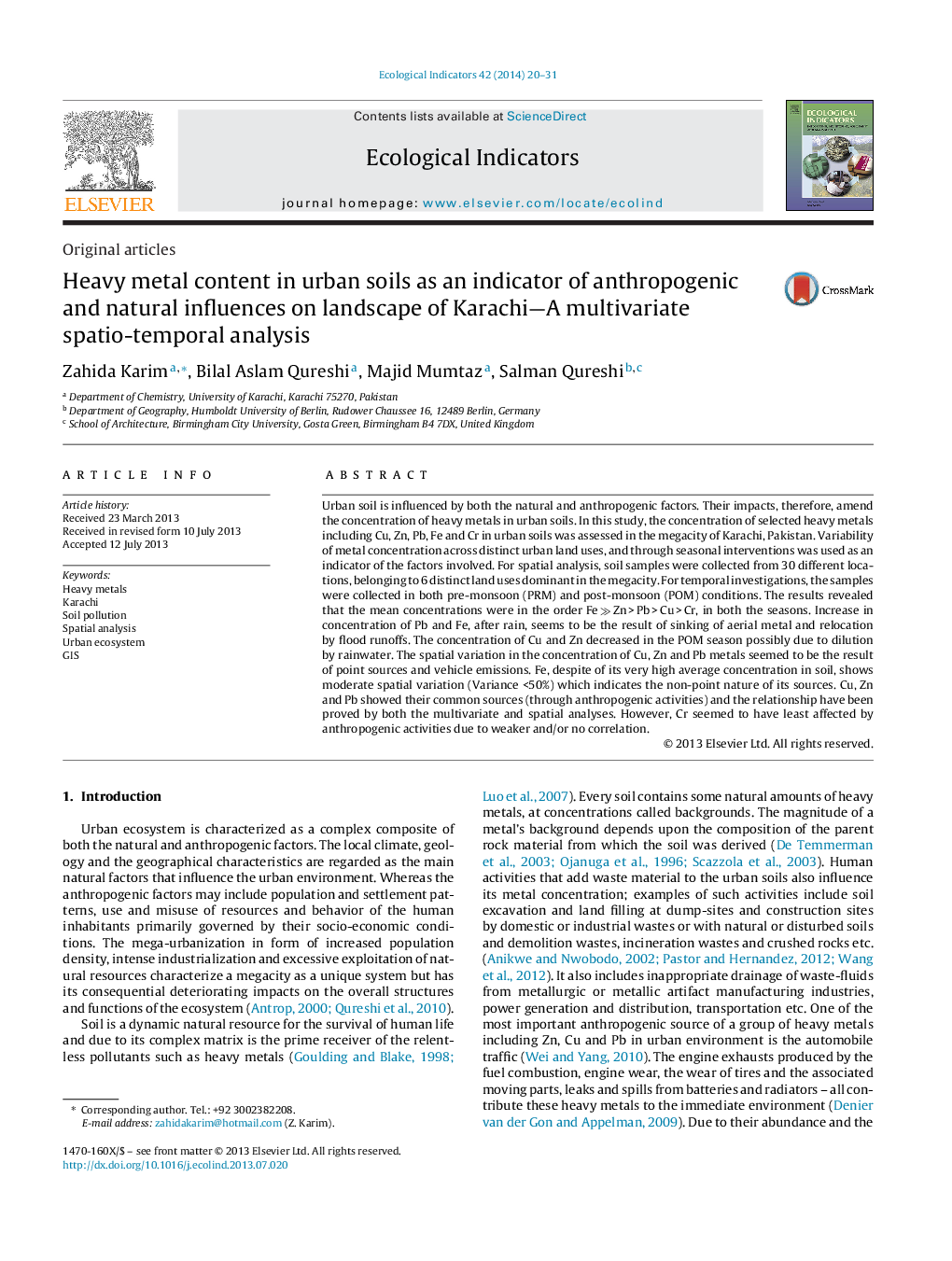| Article ID | Journal | Published Year | Pages | File Type |
|---|---|---|---|---|
| 4373140 | Ecological Indicators | 2014 | 12 Pages |
Urban soil is influenced by both the natural and anthropogenic factors. Their impacts, therefore, amend the concentration of heavy metals in urban soils. In this study, the concentration of selected heavy metals including Cu, Zn, Pb, Fe and Cr in urban soils was assessed in the megacity of Karachi, Pakistan. Variability of metal concentration across distinct urban land uses, and through seasonal interventions was used as an indicator of the factors involved. For spatial analysis, soil samples were collected from 30 different locations, belonging to 6 distinct land uses dominant in the megacity. For temporal investigations, the samples were collected in both pre-monsoon (PRM) and post-monsoon (POM) conditions. The results revealed that the mean concentrations were in the order Fe ≫ Zn > Pb > Cu > Cr, in both the seasons. Increase in concentration of Pb and Fe, after rain, seems to be the result of sinking of aerial metal and relocation by flood runoffs. The concentration of Cu and Zn decreased in the POM season possibly due to dilution by rainwater. The spatial variation in the concentration of Cu, Zn and Pb metals seemed to be the result of point sources and vehicle emissions. Fe, despite of its very high average concentration in soil, shows moderate spatial variation (Variance <50%) which indicates the non-point nature of its sources. Cu, Zn and Pb showed their common sources (through anthropogenic activities) and the relationship have been proved by both the multivariate and spatial analyses. However, Cr seemed to have least affected by anthropogenic activities due to weaker and/or no correlation.
